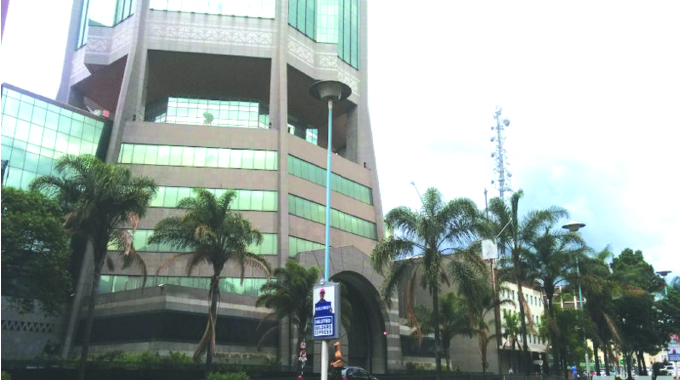Editorial Comment: Vital for auctions to be followed up

The foreign currency auctions introduced by the Reserve Bank of Zimbabwe in June 2020 rapidly sorted out the intolerable situation that had arisen in the foreign currency markets and within a couple of months were smoothly funding the foreign currency requirements for local manufacturers and for the more important imports.
This led to a dramatic slump in monthly inflation rates, which was reflected in the annual rate that so many use for indexing the economy even though the average monthly rate is actually more important in the sort of economy we have.
But then came growing delays between the allotment of currency on the auction and the actual payment of that currency into the importers’ bank accounts for almost instantaneous transmission to the foreign supplier whose invoice had been used to back the original bid on the auction.
The main block of US$200 million in delayed payments, ring fenced last year when it was decided to at least try and keep currency bids funded quickly, has not been cleared and the Reserve Bank is pushing hard to pay out on successful bids quickly, although the Confederation of Zimbabwe Industries, whose members are the biggest bidders on the auctions, says there are some delays.
The delays last year created a number of problems, all of which tended to push up the rate of monthly inflation.
Admittedly the new levels were nothing like what we had been seeing in the second quarter of 2020, and, in fact, were a small fraction of those levels, but they still reversed some of the progress we had been seeing and, more critically, created perceptions that made businesses more likely to make decisions that would feed inflation.
The first problem is that the importer, the bidder and buyer of the currency on the auction, has to have the local currency equivalent in their bank account and once the bid is accepted and allotted, even if it is not paid, that local money is in effect frozen waiting for the actual sale of foreign currency to go through.
This means importers and others have liquidity tied up without any actual benefit, like an order of imported materials or machinery on its way to Zimbabwe.
Working capital can be in the form of cash or it can be in the form of stock, but when there is no stock and the cash is locked up then it is for all practical purposes not there. This means some will have to borrow, and our interest rates are not low. That can feed inflation.
The second problem is probably worse. Some importers, desperate to maintain throughput in their business, have been tempted to enter the black market to buy foreign currency that they can qualify to buy under the auction.
This is unlikely for large orders, but it certainly will be a factor in smaller orders of critical materials or spare parts.
This does not necessarily mean the business is going onto the streets or even making contact with an accumulator of currency, although that does happen.
Quite often a more legal option is chosen whereby a holder of free funds or of legally-earned export retention funds is willing to do the import and sell to the desperate industrialist.
However, that is done at a mark-up, again quite legal and legitimate, but very often that mark-up just happens to be the premium of the black market rate over the auction rate.
This means that the imports are costed at the black market rate and that does drive inflation, and the amount it does depends on the fraction of the final product sold is funded with imports at black market rate, imports at auction rate, or local currency.
The temptation in some circles is just to use the black market rate, and in fact maintain the functional accounts in US dollars, if not the accounts that go to Zimra, and convert at the black market rate.
People can stop thinking in auction dollars, even when they get them and some businesses do not need much urging to make that conceptual switch.
The Reserve Bank Governor has also been concerned at the effects of manipulation, cheating, double dipping into the auction, and businesses having convulsions within their bank accounts as they shift cash around. All of this damaged the auction system, although not fatally, and has been combated by a variety of moves by the Reserve Bank.
The Reserve Bank has been making other reforms, such as letting the auction rate drift down, in effect making the exchange rate far more inflation neutral.
This means that the auction rate is not so much a way of taming inflation, with that being done through more conventional measures. But it will still contain inflation if successful bids are paid out fairly quickly.
The delays in the auction pay are not so much related to a fundamental shortage of foreign exchange. Zimbabwe is now in the present reform programme seeing greater inflows than outflows. In other words we are in surplus.
The difficulty comes from the way the inflows and outflows are allocated. There is not a single monolithic system in place, as most countries have.
Exporters can keep percentages of their foreign earnings in a foreign currency account. This was to allow them to import what they needed without having to ask anyone, but a fair number have been allowing their foreign currency deposits to build up.
And those private reserves are now around US$2 billion. Some is working capital, but some is just hoarded.
Other inflows, such as money sent by relatives in the diaspora, are free funds, that can be used for anything the recipient wants to use them for. These are also not on the auction.
The auction funds are those fractions of the export earnings that exporters have to sell to the Reserve Bank when the money arrives. While it should be close to what is needed for more important imports, it is obvious that sometimes there is a gap.
Policy makers now have to start looking at how we can be more precise in matching important import demand with a fair percentage of the expert earnings. There are several ways of going about this, such as encouraging banks to lend from the deposit pool, getting exporters who accumulate retained earnings to sell some after a reasonable period to cutting back on the percentage that can be retained.
The third option is not really much use as many exporters are, in fact, still net importers or need all their export earnings to buy their imports.
So the other two options now need to be examined.
Critically the percentage of export earnings allocated to the auction has to match what the priority imports need, with all of this being done in the environment that we now have of inflows exceeding outflows.











Comments